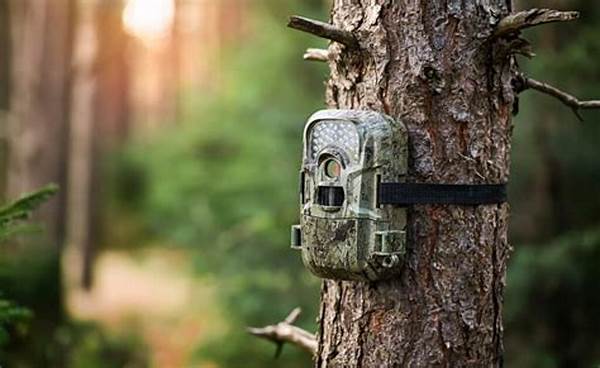Hey there, fellow shutterbugs! Capturing the perfect shot of a cheetah sprinting across the savanna or a bird taking flight can be one of the most exhilarating challenges in photography. It’s like the ultimate game of freeze tag—with your camera’s shutter as the magical freeze ray. If you’re an animal lover armed with a camera, this guide is for you. Let’s dive into the wonderful world of motion-filled wildlife photography!
Read Now : The Role Of Lighting In Professional Portraits
Mastering Your Camera Settings
So you’ve got the passion for wildlife and your camera at the ready, but how do you wrestle with those pesky settings? First things first: you’ll want to switch over to shutter priority mode. This lets you control the shutter speed while your camera handles the aperture—that means more power to stop action in its tracks. A general rule for tips for photographing moving animals is to start with a shutter speed of at least 1/1000th of a second for fast animals. As your light lowers, you might need to crank up that ISO or embrace the noise.
Next up, autofocus settings are your new best buds. Continuous autofocus will keep that prowling lion nice and sharp as it wanders across your frame. And don’t forget burst mode! Say goodbye to “oh-it-was-so-close” shots and hello to a series of thrilling action moments. To practice these tips for photographing moving animals, visit a local park or your backyard, honing your skills on squirrels or bounding dogs before heading into the wild.
Planning and Patience
Alright, you’ve got the basics down; now let’s talk strategy. Heading into the field without a plan is like going grocery shopping when you’re hungry—it can lead to a frantic, scattershot approach. Research your chosen target species and know their habits and habitats. Early morning or late afternoon light can be magical, adding warmth and dimension to your shots.
And remember: patience truly is a virtue. Sometimes those elusive creatures need time to get comfortable, so establishing a comfortable spot for yourself is half the battle. Stay hidden and stay still. The art of invisibility is an underrated tip for photographing moving animals. It’ll pay off with that moment of genuine behavior or interaction you’ve been itching to capture.
Gear Up Like a Pro
For serious wildlife photographers, having the right gear can make all the difference. A good telephoto lens, typically with a range of 200mm or greater, is essential for capturing details from a distance. Image stabilization can help mitigate camera shake. Tripods or monopods offer a stable shooting platform, especially when you’re hanging out and waiting for that perfect moment to unfold.
Fast memory cards are a must to quickly handle the rapid shots from burst mode. And don’t overlook weather protection for yourself and your gear. Mother Nature can be unpredictable, and the best photography often happens in less-than-ideal conditions. Armed with these gear-oriented tips for photographing moving animals, you’ll be ready for whatever the wild throws your way.
Mastering Light for Perfect Shots
Lighting can be your best friend or your worst enemy when capturing moving subjects. Natural light offers a dynamic range of effects, from beautifully backlit silhouettes to soft morning glow. Understanding how to work with available light is key to getting those jaw-dropping shots. Use early morning or late afternoon sun, which provides a soft, flattering illumination.
Read Now : Tips To Stay Relaxed While Shooting Portraits
Shadows and highlights can add depth and drama to your compositions. Experiment with positioning and angles. Side lighting can enhance the texture of fur, while backlighting can create a mystical aura around your subject. Pay attention to the weather, too—the unique quality of light after a rain shower might just make those colors pop!
Getting That Perfect Shot: Time and Opportunity
Oh man, who knew animal photography could be such a wild ride? Whether it’s a lion in the Serengeti or your hyperactive house cat, catching that perfect shot is like hitting the lottery. Let’s talk about some insider secrets. You know those jaw-dropping shots you see in National Geographic? They’re often the product of zillions of “meh” attempts. So brace yourself for loads of clicks.
Don’t skimp on practicing your reflexes with fast-moving animals. Every split-second counts, and even tiny adjustments can make a big difference. Frame your shots, getting down low or up high to change perspectives. And above all, learn to anticipate your subject’s next move. With these tips for photographing moving animals, you might just capture that once-in-a-lifetime shot that tells a story in a single frame.
Nature Photography Bliss
To wrap it up, focusing on the details and embracing the unpredictability of wildlife is all part of the magic. Move with your subject and adjust your positioning continuously. Keep your senses sharp—knowing when to act is where your instincts come into play.
And finally, appreciate the privilege it is to view and photograph these magnificent animals in motion. Each session teaches you something new, from creature behaviors to mastering the technical dance with your camera. Get out there and chase the wild—implementing these tips for photographing moving animals will help you savor each memorable encounter on your photographic journey.


